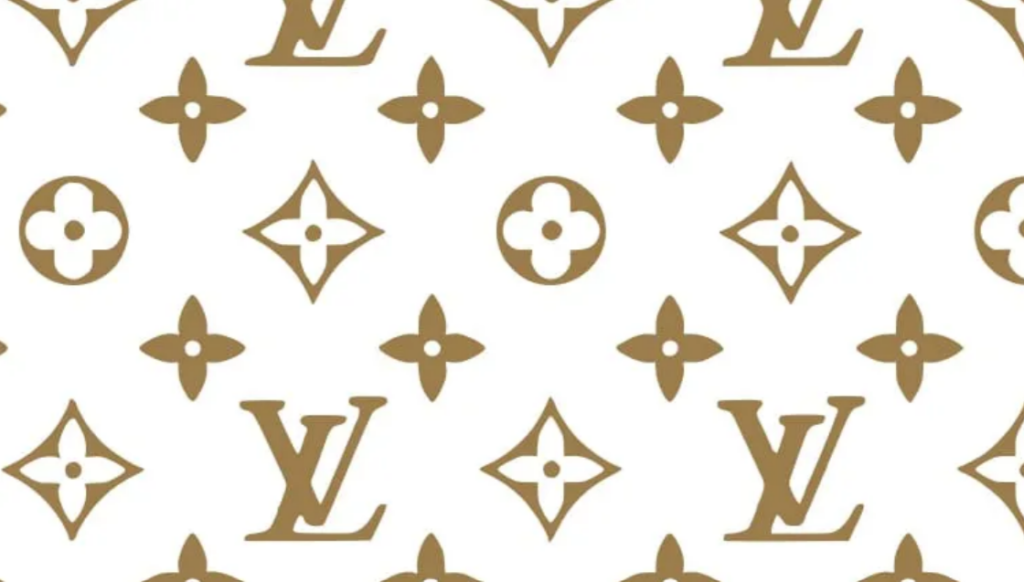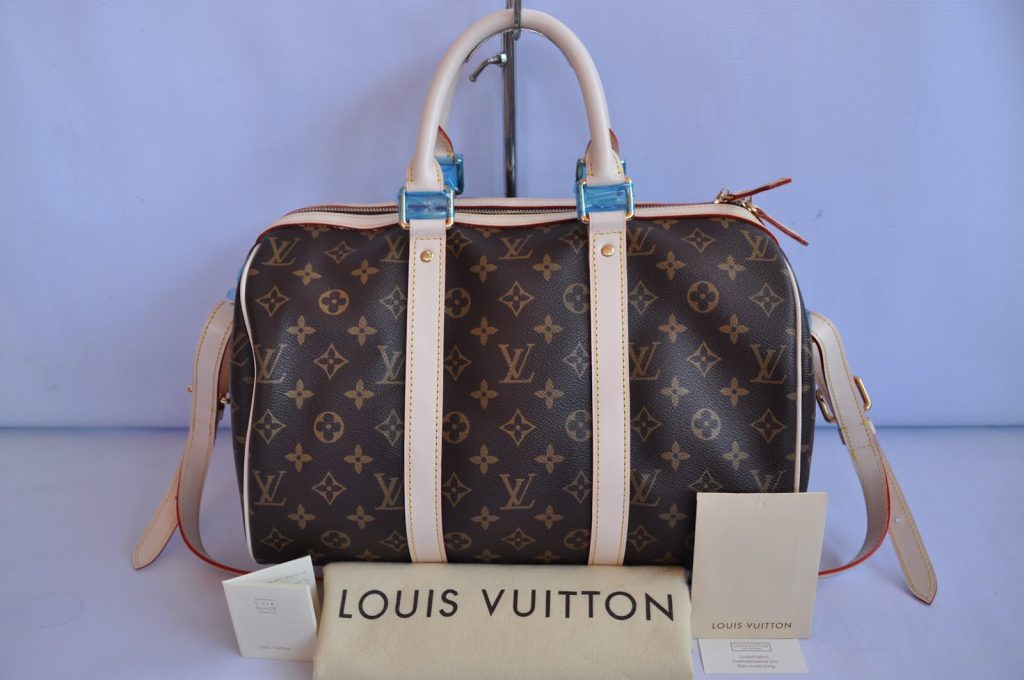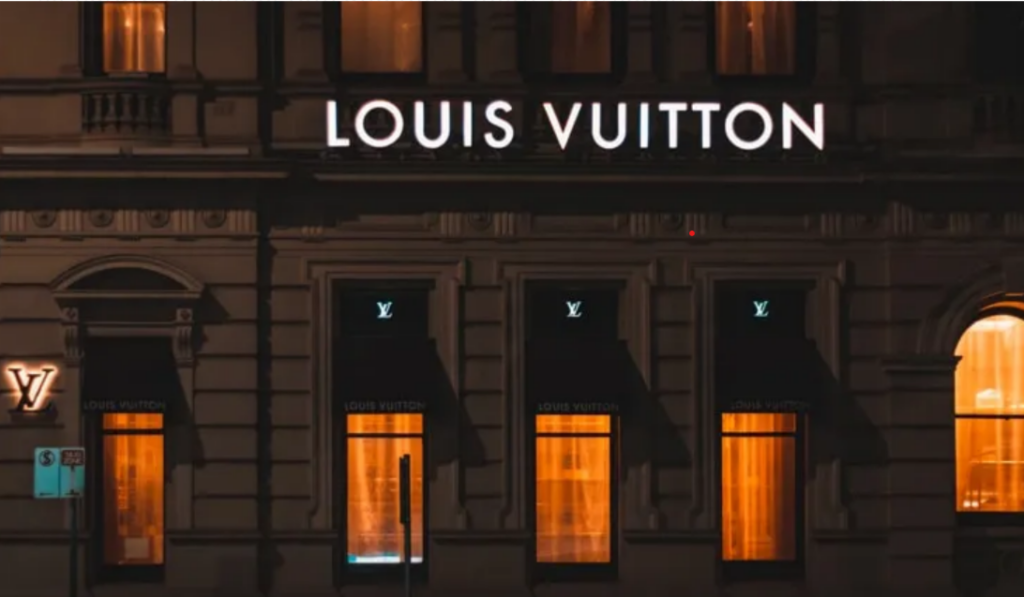
Founded in 1854 in France by its namesake, Louis Vuitton has ascended from its early days of crafting high-quality trunks to becoming a pinnacle of luxury fashion.
This illustrious brand has survived and thrived since the mid-19th century, evolving into a global fashion powerhouse renowned for its sophisticated men’s and women’s collections, iconic accessories, and distinctive footwear.
Louis Vuitton is a testament to enduring brand appeal, marked by a remarkable journey of over two and a half centuries. Its success is attributed to exceptional quality, innovative design, and a distinctive logo synonymous with luxury and style worldwide.

Esteemed as one of the most recognizable fashion labels globally, Louis Vuitton’s legacy blends rich history and modern allure, making it a coveted dream for many to own a piece of its fashion lineage.
Valued at approximately $28.8 billion by Forbes in 2017, Louis Vuitton’s remarkable journey from a trunk maker to a leading fashion brand showcases its unparalleled influence and prestige in the luxury market.
This introduction aims to delve into the storied history of Louis Vuitton, the evolution of its iconic logo, and the brand’s monumental impact on the fashion industry.
Louis Vuitton – The Brand

The Louis Vuitton brand, established by the French visionary Louis Vuitton in 1854, has evolved from its humble beginnings into a pinnacle of luxury and fashion innovation. Initially a luggage company, Vuitton revolutionized travel gear in 1858 with his flat-topped trunks, a stark contrast to the rounded-top variants then prevalent, designed for easier stacking and storage. This innovation laid the groundwork for the brand’s reputation for practical yet stylish travel goods.

The opening of its first store in London in 1885 marked the brand’s expansion beyond the French borders, setting the stage for its global presence. Georges Vuitton took over the company upon his father’s passing, and aimed to take it worldwide. Georges’ introduction of the signature Monogram Canvas in 1896 and worldwide patents significantly mitigated counterfeiting issues, a testament to the brand’s ingenuity in protecting its designs.
By the early 20th century, Louis Vuitton had established itself as a leader in the luxury goods market, with the Louis Vuitton Building in Paris standing as the world’s largest travel goods store at the time. Georges’ expansion strategy saw stores opening across major cities worldwide, from New York to Buenos Aires, illustrating the brand’s growing appeal. The transition of leadership to Gaston-Louis Vuitton in 1936 continued the brand’s legacy, albeit through a controversial period during WWII.
The brand came out of this period more robust than ever, including leather and reached beyond luggage, expanding the product line. This period began the brand’s diversification into the broader luxury market. Louis Vuitton’s foray into clothing in 1997 further cemented its status as a fashion powerhouse.
Although the brand is counterfeited more than most brands around the globe, Louis Vuitton’s commitment to excellence and innovation remains unwavering. Its iconic logo, a testament to the brand’s efforts to combat counterfeiting, has become a symbol of luxury and status, mainly contributing to its valuation of over $19 billion in 2010. Louis Vuitton’s journey from a small luggage workshop to a global luxury brand is a story of innovation, resilience, and unyielding dedication to quality and design.
The brand’s enduring success and influence in the fashion industry are embodied in its iconic logo and products, cherished by celebrities and fashion enthusiasts alike, making it a symbol of luxury and sophistication in the modern era.
What the Logo Means in the Fashion Industry
LV isn’t simply a monogram. It symbolizes luxury and affluence as one of the most lauded fashion houses globally. Launched in the mid-19th century, it has grown in size and influence today, producing upscale clothing and accessories for men and women.
The Design of The Louis Vuitton Logo

In luxury brands, Louis Vuitton stands out for its steadfast commitment to its iconic LV logo, a design that has seen minimal changes since its inception. Following the passing of Louis Vuitton in 1892, his son Georges Vuitton assumed leadership of the brand, introducing a distinctive logo to distinguish their luggage in a market flooded with imitations. Georges’ creation, a meticulously hand-drawn typeface featuring the letters “V” and “L” intertwined, drew inspiration from Roman fonts, setting a new standard for the brand’s visual identity.
This original logo unveiled over a century ago, remains largely unchanged today, a rarity among brands with such a long history. The most significant modification came in 1997 when designer Marc Jacobs highlighted the LV monogram exclusively, eliminating the brand name from beneath the symbol in marketing materials. This subtle shift aside, the logo’s elegant yet bold aesthetic essence has remained constant, standing as the world’s most recognizable emblem.
The Louis Vuitton emblem comprises the complete wordmark with the iconic monogram, gracing fabrics, and buckles of the brand’s opulent products. Crafted in the mid-19th century, the logo has undergone minimal modifications, occasionally incorporating new symbols and sometimes omitting the wordmark to let the monogram stand alone. Central to the visual identity of Louis Vuitton, the LV monogram features a sophisticated serif, italicized “L” delicately placed to the left and beneath a prominently bold “V,” symbolizing the initials of the founder.
Initially, the word “Louis Vuitton” accompanied the monogram, but this was removed in favor of a more straightforward presentation. Despite the various evolutions, the logo has consistently retained its black font against a white backdrop. Recent forays into incorporating color, mainly through a brown monogram, have been made while preserving the original hand-drawn typeface’s authenticity. Louis Vuitton’s “LV” monogram has become synonymous with luxury, aspiration, and exclusivity, symbolizing power and affluence.
Crafted by Georges Vuitton as a tribute to his father and to safeguard the brand’s authenticity, the intertwined LV monogram and floral motifs have become a signature element of the brand. Remaining fundamentally unchanged in their design for more than 120 years, these patterns have become synonymous with the brand’s legacy. This enduring symbol, a testament to the brand’s heritage and commitment to quality, continues to embody class, comfort, and luxury, making Louis Vuitton’s logo one of the most esteemed and recognizable in the fashion world.
The Louis Vuitton Logo Font

The Louis Vuitton logo embodies a fusion of tradition and modernity, characterized by two distinct styles. The brand’s full name, positioned beneath the iconic monogram, is rendered in the sleek and refined Futura sans-serif font. This choice reflects the brand’s forward-thinking ethos and harmoniously complements the monogram’s bold and classic elegance.
Introduced in 1954, the LV monogram remains unchanged, showcasing a direct overlap of a straight “V” with an italicized “L.” This emblem has become one of the most recognized symbols globally, with both letters featuring prominent, elongated serifs and pronounced, thick lines that symbolize tradition, sophistication, and the essence of luxury. Initially, Louis Vuitton presented its name handwritten, lacking a formal logo. Georges Vuitton, Louis’ son, introduced the now-famous logo and monogram a year after his father’s death and took over the business.
This design has endured, with only minor adjustments mainly related to product placement. Under Marc Jacobs’ tenure, the brand evolved to occasionally exclude the “Louis Vuitton” text from beneath the monogram, favoring a simplified representation that focuses on the iconic LV monogram for its marketing efforts. This decision was a homage to the brand’s founder, aiming to honor his legacy with the initials.
The logo, a blend of a detailed wordmark and the monogram is a critical design element across Louis Vuitton’s product range, from buckles to fabric patterns. Despite its mid-19th-century origins and the introduction of additional emblems, the logo has remained relatively unchanged. The monogram eventually became the primary component of the logo, especially evident when the wordmark was temporarily removed.
The logo’s font, initially hand-drawn in 1954 and inspired by classic Roman typefaces, features an overlapping italic upper-case “L” and a straight upper-case “V,” both adorned with bold, elongated serifs and distinct, thick lines that convey a sense of strength, tradition, and elegance.
Louis Vuitton Logo Colors

While the brand’s official logo is predominantly black, it embraces a spectrum of colors to align with its varied product lines and branding initiatives. This diverse color scheme ranges from subtle pastel hues to vivid shades such as orange and green, demonstrating the brand’s adaptability. Notably, the classic brown rendition of the logo has been synonymous with Louis Vuitton handbags for decades, its subdued tone harmonizing with the rich leather hues.
Marc Jacobs introduced a refreshing twist to the logo, incorporating a colorful monogram pattern in white, pink, blue, purple, and yellow, appealing to a younger demographic while maintaining an air of sophistication. Louis Vuitton’s visual identity is characterized by two primary color schemes: a sleek, monochromatic version that conveys strength and elegance across various mediums and a light-beige, nearly golden hue, symbolizing luxury and refinement, which captures the brand’s ethos. The choice of black for the logo signifies the brand’s commitment to excellence, innovation, and elegance.
Changes in Design

The logo of the fashion house, crafted in the mid-19th century, has remained unchanged over the years, with the only modifications being the introduction of supplementary emblems and the temporary removal of the wordmark, leaving the monogram as its sole component.
The brand employs two distinctive versions of a stylized flower as additional symbols: one features four elongated, pointed petals within a black rhombus. At the same time, the other presents a rounded flower encased in a solid circle.
These symbols are central to the brand’s visual identity, often embellishing its high-quality leather and fabric items.
Replications
Louis Vuitton stands as one of the fashion industry’s most frequently imitated brands, with reports indicating that nearly 20% of counterfeit accessories sold within the EU bear the Louis Vuitton brand. Addressing this issue with unwavering commitment, the company employs around 60 full-time staff dedicated exclusively to combating counterfeits. Among its numerous strategies to curb the proliferation of counterfeit goods, Louis Vuitton has innovated the iconic Monogram Canvas.

This distinctive pattern, symbolic of the LV monogram, is a hallmark of authenticity.
Further emphasizing its dedication to this cause, Louis Vuitton allocates nearly half its communications budget to anti-counterfeiting efforts. This financial commitment underscores the brand’s proactive approach to minimizing the impact of counterfeit activities.
In addition to the Monogram Canvas, Louis Vuitton has launched various initiatives to safeguard its designs and reputation, reinforcing its stance against counterfeit production.
Lessons From The Iconic Brand

Louis Vuitton’s (LV) success story emphasizes the power of consistency in branding. The iconic fashion house has maintained its original monogram and floral design with only minor adjustments, such as font color modifications, choosing to innovate within its product lineup rather than altering the fundamental aspects of its brand identity.
This approach underscores the importance of a recognizable and stable brand image that resonates with consumers over time.
Collaboration is another critical strategy LV employs to enhance its brand. By partnering with entities that align with its values and vision, LV ensures that each collaboration strengthens its brand’s distinctiveness while amplifying its message. These partnerships are carefully selected to reflect LV’s luxury status and commitment to quality, proving that the correct associations can significantly benefit a business without diluting its brand identity.
Despite facing the negative press and rumors suggesting that customers have grown weary of the pervasive ‘LV’ monogram, the brand’s financial success speaks otherwise. With sales reaching $15 billion and a reputation as one of the world’s most valuable brands, Louis Vuitton, demonstrates resilience in the face of skepticism, showcasing the importance of staying true to one’s brand identity amidst criticism. The LV also exemplifies the importance of thoughtful trend adoption in the ever-evolving fashion industry.
The brand carefully assesses whether to engage with prevailing trends, such as the one set by Balenciaga’s models with branded fingernails, weighing the benefits against the potential for overexposure. This cautious approach to trends ensures that LV’s branding remains impactful without succumbing to fleeting fashions that could dilute its essence. The design and functionality of LV’s digital presence highlight the significance of a logo and brand identity in the digital age.
The LV website is strategically designed to feature the monogram and brand name without overwhelming visitors, ensuring an optimal user experience across devices. This balance between brand representation and user interface underscores the critical role of thoughtful design in maintaining brand integrity online, proving that a strong logo should enhance, not hinder, digital engagement.
Check out these awesome Logo Contests run on Hatchwise:








